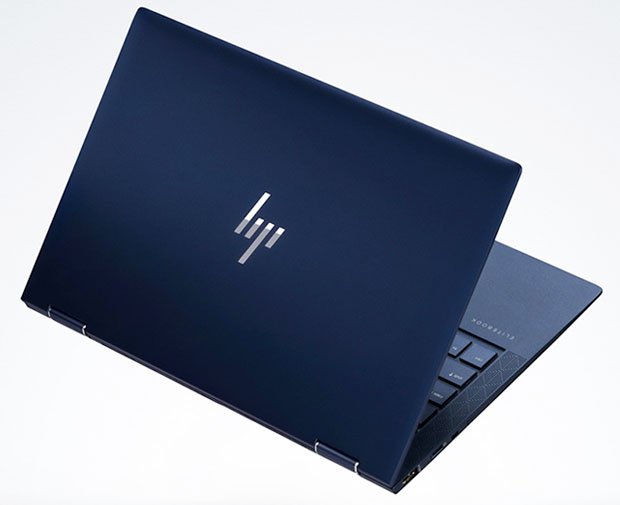The pandemic may force certain improvements but I’m not sure that it will, because political distractions are doing a rather good job of drawing our focus away from fixing things now.
For instance, we should be ramping domestic manufacturing of PPEs and ventilators permanently to prepare for a likely huge fall spike in COVID-19 infections. Still, we aren’t, which suggests that lessor priorities may not be getting the attention they need either. We tend to excessively focus on blame and not focus enough on avoiding the repetition of mistakes, which will weaken any positive outcomes from this pandemic.
However, in the works right now are three things that may result in a better post-pandemic world. One is video conferencing, which has been on a slow ramp to overnight success since the mid-1960s when it was supposed to become the standard way we communicated.
Another is robotics, which is getting a ton of attention right now, ranging from automated delivery to automated manufacturing.
The third is 3D printing, which has been used impressively for rapid manufacture of some of the things that are needed to keep our first responders safe, and to help speed up the manufacture of critical equipment like ventilators. Both have been in noticeably short supply.
I’ll close with my product of the week: the latest version of HP’s Halo laptop, the Dragonfly, which may be the best laptop currently in the market.
Video Conferencing and Virtual Conferences
I first became interested in video conferencing when I used the AT&T demonstration phones at Disneyland in the 1960s, and I’ve covered it since the mid-80s. We’ve long known that for widespread success, a video conferencing offering needs to be affordable, and it needs to address privacy concerns adequately. No one wants an active camera looking at them all the time. Further, it needs to interoperate across hardware devices.
Video conferencing never made it out of the labs with a dependable product until the 1980s, and then it was used only inside an office. The people in the early trials thought it was mostly so their bosses could spy on them, so it failed.
In the 1990s, video conferencing failed to take off due to the lack of interoperability and horrid user experience, on top of being excessively expensive.
In the 2000s, the technology did get some traction with offerings like FaceTime and WebEx. Still, the lack of interoperability, poor quality video, inability to have side conversations easily, and inadequate security once again led to failure to meet its potential.
Last decade, even though quality improved dramatically, the lack of interoperability still made a video conference the exception rather than the rule, and folks were more likely to get on a plane than to go to a virtual event or to video conference on a regular basis.
One of the arguments for the failure is that humans don’t like change. When given a choice between traveling and video conferencing, most continued to do what they had done and took the flight option. Now we are forced to do video conferencing. For the next year or so, the vendors creating these solutions will be hearing the same complaints about interoperation, the inability to have side conversations, and security.
As a result, the vendors — and we saw an early indication with Google Meetings — now are trying to differentiate with interoperation and security, with side conversations potentially migrating to some kind of integrated social media.
Virtual conferences remain problematic, but the loss of sales potential is forcing developers to look at this problem, and they should be able to field several potential solutions by year-end. We’ll know then if any get this right.
If they do get this right, the need for business travel should be reduced significantly, and video conferencing finally should be able to meet the potential we saw back in the mid-1960s.
Reconsidering Robotics
Robots have been on a slow ramp to replace people in dangerous situations since at least the 1950s. They are used successfully today for things like bomb disposal, exploring where people can’t go (post-disaster building collapses, unsafe mines, outer space).
While there have been attempts to replace both
coffee shops and
fast food chains with robotic alternatives, they haven’t gained much traction.
However, we now are making aggressive efforts to socially distance, and the risk of virus transmission is forcing another look at this technology. Robotic efforts are gaining far more interest.
We are seeing a lot of focus on the rapid development of
robotic delivery solutions,
robotic restaurants, and, I expect,
robotic caretakers. This is on top of the efforts to construct robotic soldiers — some of which are
pretty scary looking).
Many are using technology advancements borrowed from autonomous car efforts to ramp up solutions rapidly, because they can be far more cost-effective than early attempts like Amazon Go, the robotic grocery store chain.
I expect that by the time we have an anti-coronavirus strategy at critical mass, there will be far more robots in customer-facing roles than there would have been had there not been an outbreak.
This also suggests a considerably faster ramp to using autonomous cars instead of humans for services like Uber as well.
3D Printing
Before the COVID-19 outbreak, few people recognized the impact of 3D printing or took its potential to redefine manufacturing seriously. During the outbreak, companies like HP Inc., which has industrial-class 3D printers, and lots of other 3D printer owners stepped up to supply critical safety gear and components, showcasing the time-to-market advantages of this technology.
This critical need has caused manufacturing firms to rethink the use of 3D printers while they look at aggressive ways to eliminate manufacturing lines using people, to avoid another catastrophic plant shutdown.
3D printing shops have far lower employee densities, which has allowed them to continue operating with what appears to be a lower incidence of infection than at more traditional manufacturing facilities. This potentially makes them more resilient not only to this pandemic but the next one as well.
Since we are anticipating a second wave of COVID-19 and more pandemics to come, it’s likely we’ll see increasing efforts to automate factories entirely with integrated 3D printers. The world is pivoting to respond to the now near-constant virus threat.
Wrapping Up
We’ve seen world wars drive extremely rapid advancements in technology in the past. Before World War 1, flying was something you saw at fairs. Then, after two world wars, ordinary people were flying around in jets.
This current war against a virus seems to be having a similar impact. However, it is being offset somewhat by an excessive focus on blame and political maneuvering — both showcasing the critical need for advancements and slowing those advancements.
However, I do expect the result to be significant improvements in video conferencing and virtual events; in robotics, including autonomous vehicles; and in manufacturing automation, particularly with 3D printers.
It may take us up to two years to get through this current crisis, and many of us, sadly, won’t make it to the other end. Those of us who do should find ourselves in a world with far less travel –resulting in far less pollution, by the way; far more robots doing things that otherwise would put humans at risk; and more automated manufacturers that should be able to build far more highly customized products.
I doubt these will be the only silver linings to this dark cloud, because we also are likely to have considerably faster ways to develop anti-pathogen drugs as well. Maybe this could be the last real Pandemic for at least a generation, or ever. We’ll see
When HP brought out its
HP Elite Dragonfly, I was impressed. It came close to what I considered to be the perfect laptop for me. Then the company informed me who it was designed for, and it was for a woman trailblazer. Now, when I was younger, being girly was thought to be a bad thing, but now women are awesome, so I’m personally benefiting from the advances of the women’s movement.
HP updated this product, and it got even better. Let me explain.
 HP Elite Dragonfly
HP Elite Dragonfly
What I find interesting is that while this is one of the very few products that took women users into consideration in the tech market, I think it is better than most male-oriented products. The latest version has a built-in Tile tracker so, if it is misplaced, you can easily find it. If you can’t, you still can remote wipe it, so your personal information isn’t compromised. Men lose things, too; we just don’t like to admit it.
The laptop is a beautiful blend of design and capability with what I think is one of the most exciting colors ever put on a production product — a blue/black that I’d love to see on a car. It arguably is the greenest laptop yet, with significant recycled content. The magnesium it uses for the frame is 90 percent recycled, for instance. It passes 19 military specifications for drop and shock, so like that old Timex ad, it will take a beating and keep on ticking — or running in this case.
It has HP’s most robust security, and it is WAN enabled, so if your home WiFi is saturated because the kids are playing games, you can keep working at speed. It doesn’t yet support 5G, however. It is one of the few laptops that supports Wi-Fi 6.
You can get it with the brightest screen in its class (1,000 nits) and the best automatic privacy screen, something HP calls “Sure View Reflect,” which kind of turns the screen into a mirror for those not supposed to be looking at it. (Given the female target demographic, I kind of wonder if a future version might not turn the screen into a temporary mirror for the user at some point.)
In the end, the latest HP Dragonfly may be the perfect notebook someone like me who has to travel a lot and likes to work outdoors. As a result, it is my product of the week.
The opinions expressed in this article are those of the author and do not necessarily reflect the views of ECT News Network.


 Rob Enderle has been an ECT News Network columnist since 2003. His areas of interest include AI, autonomous driving, drones, personal technology, emerging technology, regulation, litigation, M&E, and technology in politics. He has an MBA in human resources, marketing and computer science. He is also a certified management accountant. Enderle currently is president and principal analyst of the
Rob Enderle has been an ECT News Network columnist since 2003. His areas of interest include AI, autonomous driving, drones, personal technology, emerging technology, regulation, litigation, M&E, and technology in politics. He has an MBA in human resources, marketing and computer science. He is also a certified management accountant. Enderle currently is president and principal analyst of the








